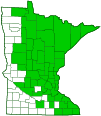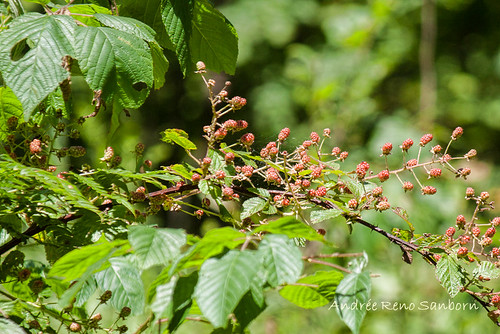Allegheny blackberry
(Rubus allegheniensis)
Conservation • Wetland • Description • Habitat • Ecology • Use • Distribution • Taxonomy
Description |
||
Allegheny blackberry is a 2′ to 7′ tall, erect, perennial bramble that rises from a taproot. It often forms loose colonies. It is the most widespread and often commonest tall blackberry in Minnesota. A series of biennial stems are sent up from a perennial base. In the first year the stems do not flower and are known as primocanes. Primocanes are semi-erect, unbranched, up to 12′ long, and deep green with a reddish or brownish tinge. They have vertical grooves giving them an angled appearance. They have scattered prickles and are usually hairless but occasionally have scattered glandular hairs near the tip. The prickles are straight or nearly straight, up to ⅜″ long, have a broad base, and have a sharp tip that can easily tear skin. Second year stems are known as floricanes. Floricanes are arching and reddish-green. They have vertical grooves giving them an angled appearance. They have scattered prickles and are hairless or have appressed hairs. They do not get any longer but produce short lateral branches with a few leaves and a terminal flower or cluster of flowers. They are not glaucous and do not reroot at the tip. The prickles are straight or slightly hooked, up to ⅜″ long, have a broad base, and have a sharp tip that can easily tear skin. The leaves are alternate and deciduous. Primocane leaves are typically palmately divided into 5 leaflets, rarely 3 leaflets. At the base of each leaf stalk is a leaf-like appendage (stipule) that is linear and ¼″ to ⅝″ long, though usually no more than ⅜″ long. The terminal leaflet is egg-shaped to elliptical, 3¼″ to 5¼″ long, and 1½″ to 3½″ wide. It tapers to a long point at the tip with concave sides along the tip. It may be rounded, heart-shaped, or tapered at the base. The upper surface is thinly hairy. The lower surface is velvety-hairy. The margin has fine, sharp, forward-pointing teeth. It is on a long leaflet stalk. The lateral leaflets are similar but smaller. The 2 adjacent lateral leaflets are on shorter stalks, the remaining 2 leaflets are on even shorter stalks. The leaflets are no more than twice as long as they are wide. Floricane leaves are similar to primocane leaves but are typically divided into 3 leaflets, not 5. The inflorescence is an unbranched, elongated cluster (raceme) with 7 to 25, typically 9 to 14, stalked flowers. It is cylinder-shaped, 3⅛″ to 8⅝″ long, 1⅛″ to 2¾″ wide, much longer than wide, and extends well beyond the leaves. The stalk of the cluster (peduncle) and the stalks of the individual flowers (pedicels) have numerous conspicuously gland-tipped hairs. The flowers are 1″ to 1⅞″ across. There are 5 green, triangular-shaped sepals, 5 white, elliptical to egg-shaped petals, and many stamens. The petals are longer than the sepals. There is little or no fragrance. The fruit is a juicy, short, cylinder-shaped, 5 ⁄16″ to ⅝″ long, 5 ⁄16″ to 11 ⁄16″ wide aggregate of multiple drupelets. It is initially white or green, later turning red, eventually turning almost black when it ripens. It matures late July to early September. When the fruit is picked it does not separate easily from its core. |
||
Height |
||
2′ to 7′; arching canes up to 12′ long |
||
Flower Color |
||
White |
||
Similar Species |
||
Black raspberry (Rubus occidentalis) stems are round, not grooved or angled. The leaf stalks are hairless. The inflorescence is a dense, flat-topped or convex cluster of 3 to 7 flowers. The stalks of the individual flowers have some fine hairs but no glandular hairs. Oldfield blackberry (Rubus alumnus) inflorescence is 2⅜″ to 4″ wide. The sepals are longer. Plains blackberry (Rubus ablatus) peduncles and pedicels have dense, non-glandular hairs but have no glandular-tipped hairs. |
||
Habitat |
||
A wide variety of disturbed habitats. Moist to dry. Mostly woodland edges in partial shade, but also in woods in dense shade and prairie edges in full sun. Mostly sandy soil but also loamy soil. |
||
Ecology |
||
Flowering |
||
Late May to early July |
||
Pests and Diseases |
||
|
||
Use |
||
|
||
Distribution |
||||
|
Sources |
|||
| 2/3/2023 | ||||
Nativity |
||||
Native |
||||
Occurrence |
||||
Common Allegheny blackberry is the most common tall blackberry in Minnesota. |
||||
Taxonomy |
|||
| Kingdom | Plantae (Plants) | ||
| Division | Tracheophyta (Vascular Plants) | ||
| Subdivision | Spermatophytina (Seed Plants) | ||
| Class | Magnoliopsida (Dicots) | ||
Order |
Rosales (Roses, Elms, Figs, and Allies) | ||
Family |
Rosaceae (Rose) | ||
| Subfamily | Rosoideae (Brambles, Roses, Strawberries, and Allies) | ||
| Tribe | Rubeae (bramble) | ||
Genus |
Rubus (brambles) | ||
| Subgenus | Rubus | ||
| Section | Allegheniensis | ||
Subordinate Taxa |
|||
|
|||
Synonyms |
|||
Rubus allegheniensis var. allegheniensis Rubus allegheniensis var. plausus Rubus allegheniensis var. populifolius Rubus attractus Rubus auroralis Rubus fissidens Rubus longissimus Rubus nigrobaccus Rubus nuperus Rubus pennus Rubus rappii Rubus separ |
|||
Common Names |
|||
Allegheny blackberry common blackberry |
|||
Glossary
Aggregate fruit
A compound fruit consisting of many separate individual fruits derived from separate ovaries in a single flower, like a raspberry or blackberry.
Bramble
Thorny plants in the genus Rubus, including blackberry, dewberry, and raspberry.
Corymb
A flat-topped or convex inflorescence in which the stalked flowers grow upward from various points on the main stem to approximately the same horizontal plane. The outer flowers open first.
Drupe
A fleshy fruit with a single hard, stone-like core, like a cherry or peach.
Floricane
A two year old cane of a raspberry or blackberry that bears fruit and then dies.
Glandular hairs
Hairs spread over aerial vegetation that secrete essential oils. The oils act to protect against herbivores and pathogens or, when on a flower part, attract pollinators. The hairs have a sticky or oily feel.
Glaucous
Pale green or bluish gray due to a whitish, powdery or waxy film, as on a plum or a grape.
Palmate
Similar to a hand. Having more than three lobes or leaflets that radiate from a single point at the base of the leaf.
Pedicel
On plants: the stalk of a single flower in a cluster of flowers. On insects: the second segment of the antennae. On Hymenoptera and Araneae: the narrow stalk connecting the thorax to the abdomen: the preferred term is petiole.
Peduncle
The stalk of a single flower or flower cluster.
Primocane
The first year cane of a raspberry or blackberry; it is usually unbranched and normally does not flower.
Raceme
An unbranched, elongated inflorescence with stalked flowers. The flowers mature from the bottom up.
Sepal
An outer floral leaf, usually green but sometimes colored, at the base of a flower.
Stipule
A small, leaf-like, scale-like, glandular, or rarely spiny appendage found at the base of a leaf stalk, usually occurring in pairs and usually dropping soon.
Visitor Photos |
|||||
Share your photo of this plant. |
|||||
| This button not working for you? Simply email us at info@MinnesotaSeasons.com. Attach one or more photos and, if you like, a caption. |
|||||
|
|||||
MinnesotaSeasons.com Photos |
|||||
Plant |
|||||
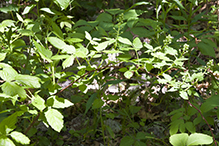 |
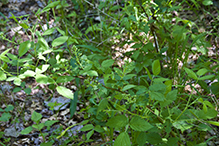 |
||||
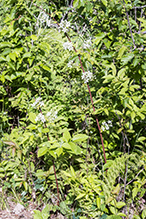 |
|||||
Flowers |
|||||
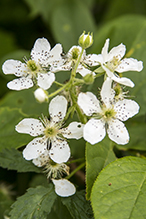 |
|||||
Inflorescence |
|||||
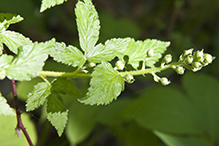 |
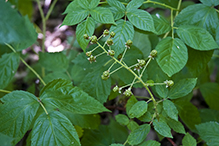 |
||||
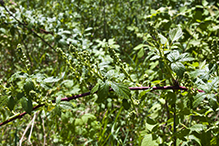 |
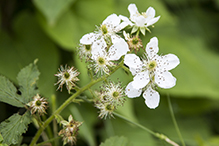 |
||||
Leaves |
|||||
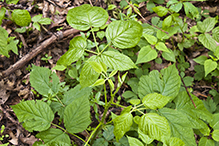 |
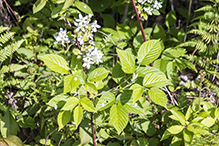 |
||||
Stem |
|||||
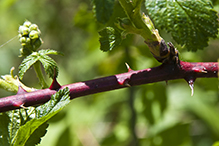 |
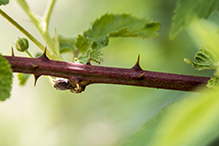 |
||||
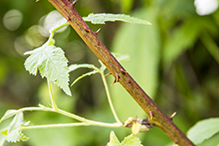 |
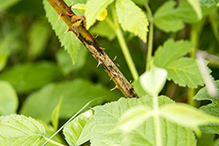 |
||||

Visitor Videos |
|||
Share your video of this plant. |
|||
| This button not working for you? Simply email us at info@MinnesotaSeasons.com. Attach a video, a YouTube link, or a cloud storage link. |
|||
Other Videos |
|||

Visitor Sightings |
|||||
Report a sighting of this plant. |
|||||
| This button not working for you? Simply email us at info@MinnesotaSeasons.com. Be sure to include a location. |
|||||
|
|||||
MinnesotaSeasons.com Sightings |
|||||

|
Created: Last Updated: © MinnesotaSeasons.com. All rights reserved. |
